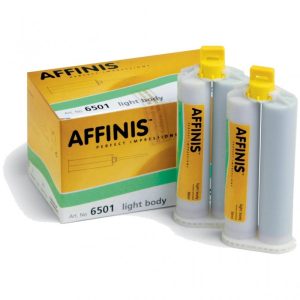The differences that bring us together
Featured Products Promotional FeaturesPosted by: Dental Design 27th April 2022

Every professional within dentistry has a different role to play, but they all have the same goal – to promote good oral health and deliver exceptional results to every patient.
With the development of enhanced technologies, materials and techniques, communicating and working together has been made more straightforward, yet there may still be ways that the relationship between dental professionals can be improved.
Every dental treatment requires thorough communication and teamwork for successful outcomes to be possible – in restorative dentistry, this is even more so. As patients’ expectations regarding restorative treatment have become higher, it’s crucial that you and your team work harmoniously to make this shared goal a reality.
Improving teamwork in the practice
The dental team is comprised of many members of staff who all have different roles and responsibilities, but work together and support one another in order to deliver the best care to patients. Respect, trust and encouragement amongst the team will help inspire motivation and productivity. However, issues can occur and this can create challenges within the workplace. Therefore, it is crucial that your practice has tenets in place that will help to overcome these challenges, should they arise.
Ensuring that all team members are aware of their duties can help everyone feel organised – morning huddles are an effective method for setting the tone for the day, helping to establish clarity and giving the team focus. Prioritising communication will help the team to feel confident when speaking to one another, sharing queries or concerns and keeping the working environment professional and positive.
Investing in your team helps to boost their confidence, improve patient care and diversify your treatment capabilities. Certain treatments, especially those that are restorative in nature, have surged in popularity, so prioritising training in these areas can be vastly beneficial. For example, because dental nurses can prepare, mix and handle dental biomaterials, you may consider training them in pouring, casting and trimming study models and taking impressions. Not only will this expand their abilities, but it will also prompt you to consider the materials that you employ – are they easy to use? Are they effective in producing accurate impressions? Communicating this with your dental nurse will help you to make more appropriate choices when it comes to taking precise impressions.

Practice and lab communication
Communication and teamwork between the dental practice and laboratory is paramount when ensuring the success of the restoration. The dental technician is a vital extension of the dental team and, because you cannot always speak to the technician in person, maintaining a good line of communication should be a priority.
When it comes to restorative dentistry, accuracy and precision are the key to successful prostheses and satisfied patients. As well as providing clear patient information regarding the fabrication, the materials you use are another form of communication that can determine the restoration’s success. There are many impression materials available on the market, so it’s important to choose the one that will not only give you accurate impressions, but will help to facilitate good communication between the dental practice and laboratory. When errors do occur due to inaccuracies in the impression, time and money may be spent remaking them, which could have detrimental effects on your relationship with the technician.
When you consider the efficacy of your impression material in both your practice and the laboratory, you’re helping to minimise the risk of impression errors, improving communication between your team members and delivering the best possible outcomes to your patients.
Team work is the way forward
Despite the popularity of digital impressions, conventional impression materials continue to be improved and enhanced in order to combat common issues that dental professionals may encounter with them. Materials such as addition silicone (A-silicone) is ideal for bridges, fixed prostheses and crown impressions, as it has an impressive dimensional stability and a high resistance to deformation.
COLTENE is proud to offer the premium, A-silicone AFFINIS™ impression material – with exceptional wettability and excellent flow properties in moist environments, you can produce reliable and accurate impressions. AFFINIS™ impressions can also be autoclaved at 134° without losing its unique properties. There are various options to choose from, which include the AFFINIS™ Light Body, AFFNIS™ BLACK EDITION and AFFINIS™ PRECIOUS, so you have plenty of extraordinary choices at your fingertips.
Despite the different responsibilities of all dental professionals, high-quality outcomes and patient satisfaction will always be their ultimate aims. Efficient teamwork and communication with every member of the team creates a positive, proactive working atmosphere and facilitates successful restoration outcomes.
Nicolas Coomber COLTENE National Account & Marketing Manager
For more on COLTENE, visit www.coltene.com, email: info.uk@coltene.com or call 0800 254 5115.
![]()








